Want to add some color and quirkiness into your self-portraits? Try it with food. A while back, when Cristina Otero shot “Tutti Frutti”, a series of playful self-portraits with fruit, it quickly went viral.
Today—with over 70,000 followers on her Facebook page alone—this creative Spain-based photographer continues to create and share eye-catching portraits on her 500px page.
In this exclusive tutorial, Cristina Otero looks back at one of her popular self-portraits, “Chirimoya” where she poses with a green apple. Below, she shares her secrets to prepping, posing, and getting the shot with her lean, simple process. Read on, and try this fun tutorial at home!
by Cristina Otero
People usually ask me, “I want to start doing self-potraiture. But I don’t know how to begin. Can you help me?”
The answer is quite simple: Stop seeing yourself only as the photographer, but as a model too. The steps I take to make a self-portrait are always the same, and you’ll see they are very easy to follow. For this tutorial, I’ll use “Chirimoya”, one of the pictures in my “Tutti Frutti” series as an example.
1. Come up with a creative idea.
Get inspired and be creative! Plan out exactly what you want to shoot. “Chirimoya”, which means custard apple in Spanish, is one of the pictures in my series of self-portraits where fruit is the protagonist. Tutti Frutti was born after my passion towards fruit. I’ve always loved fruit. One day, I was eating an orange and I came up with the idea of creating a self-portrait with it. I asked myself:”If this piece of orange were a person, what kind of personality would she or he have?” And so I combined make-up and expressions with the orange. Then I did the same with all the rest.
2. Decide how to do it, then make a mental sketch.
Consider how you will create the picture. Ask yourself: Will it be a simple portrait? Will there be a background? What about the light, the colors, the mood? I knew I wanted to make a happy and fun portrait, where fruit would be the protagonist. So the required background, jewelry, and clothing were discarded. The lighting here would be simple and bright. I used natural light. I also decided that for this portrait to work, makeup will play a very important role. In this case, to shoot “Chirimoya”, I would need to paint a custard apple using makeup.
3. Gather all your materials.
What will you need for the photo shoot? I obviously needed fruit! And makeup. To recreate a custard apple on my face, I painted black dots, black lips, and applied green eye make-up. After all, a custard apple is green on the outside and white on the inside with huge black seeds planted inside. I also used a wig. And since my eyes are actually brown, I used blue contact lenses.
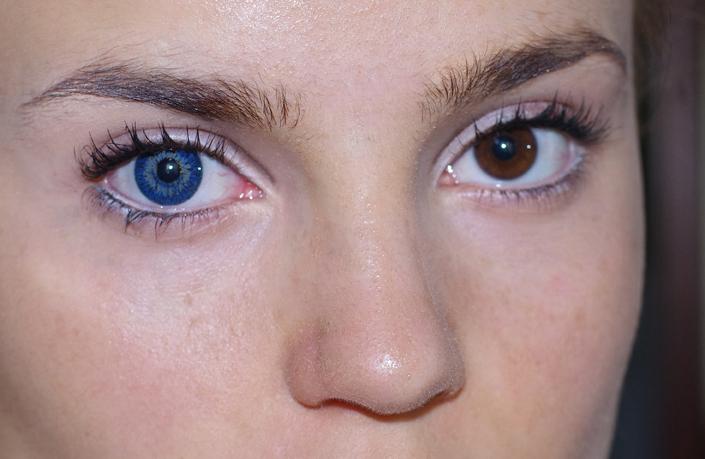
4. Find a location with the best light.
As I mentioned earlier, I used natural light. I use a roofless room in my garden as my studio. For the background, I only needed to set up chairs and a white and black blanket.
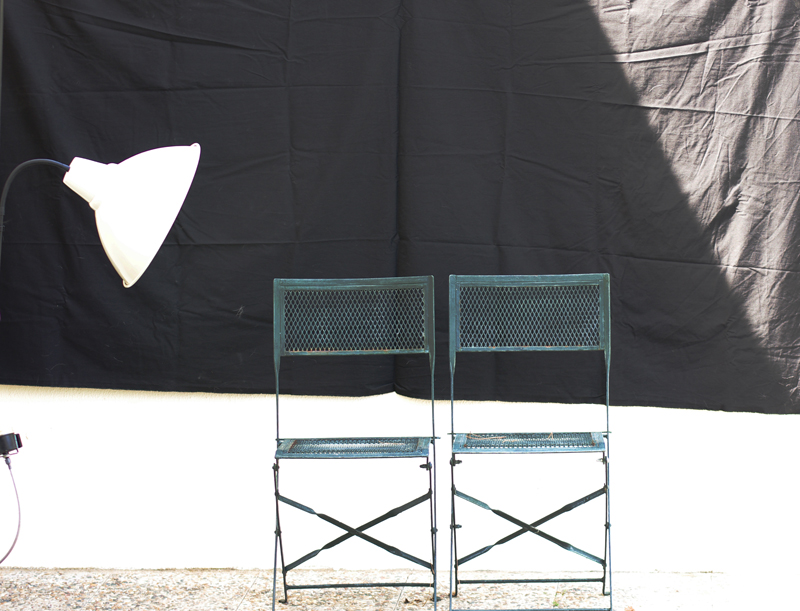
5. Set up your gear.
For any self-portraits, I always shoot with a PENTAX K5 camera, a PENTAX remote control, and an Induro Carbon 8X CT214 Tripod.
6. Prepare the camera settings.
Once I have everything set up (my make-up, done; camera on tripod, done), I prepare the settings on my camera. I sit in front of the camera, and take a test shot with the remote control to see if my face is focused and check if every setting is correct. I keep changing the aperture and focal length, and taking test pictures until I like the results.
For “Chirimoya”, here is the camera data:
Camera: PENTAX k5
Shutter Speed: 1/99 second
Aperture: F/4.0
Focal Length: 31mm
ISO Speed: 400
7. Prepare yourself to become the model.
It may sound easy to do, but it’s actually a tricky step. We photographers like to have everything under control. We like to see what we are shooting right at the moment. But in a self-portrait, you can’t do this. And that’s why you have to prepare everything beforehand.
Posing in front of a camera might be hard at first. You have to practice a lot, but it becomes easier each time. Here, you have to forget that you are a photographer and just feel the camera. Feel the mood and portray it, move your shoulders, tilt your chin, frown, glare, smile. If you are shy, don’t worry! You are alone when you shoot, and only you will see the results! And that’s what I did. I bit half of the custard apple, arched an eyebrow, and stared at the lenses.
8. Edit.
It may take you forever for that perfect shot or not. Sometimes, I have to take hundreds of pictures. Sometimes, it just takes one. When you are done, go to your computer, and select your favorite picture.
I chose to go with this shot below, and used Adobe Photoshop CS3 to edit:
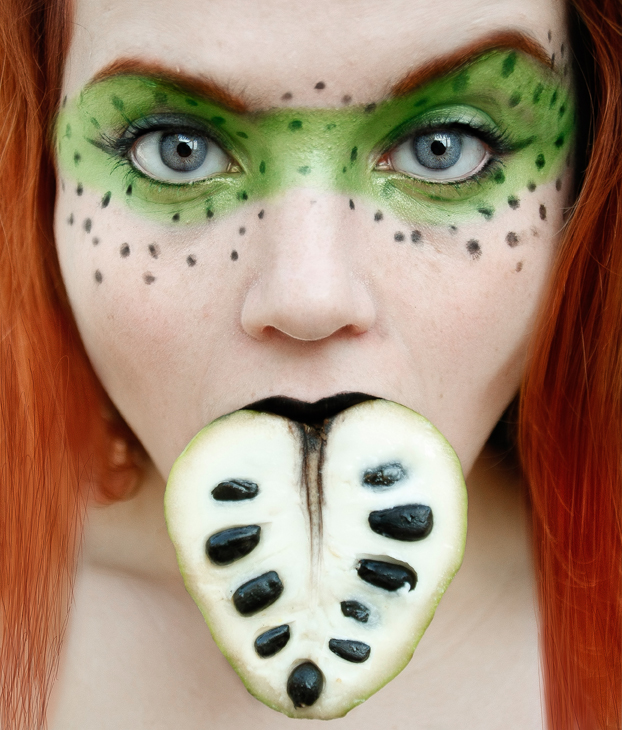
People usually ask me how I edit my pictures. I actually don’t have any rules when it comes to editing. I just experiment with Photoshop tools, and play with the options they give me. If I like the effect, I’ll leave it. If I don’t, I’ll erase it.
EYES
Eyes in a photograph are very important to me. They have to pop out. For this to happen, I always brighten them up and give them more contrast. I try to do it in a subtle manner, so it doesn’t scream fake.
Before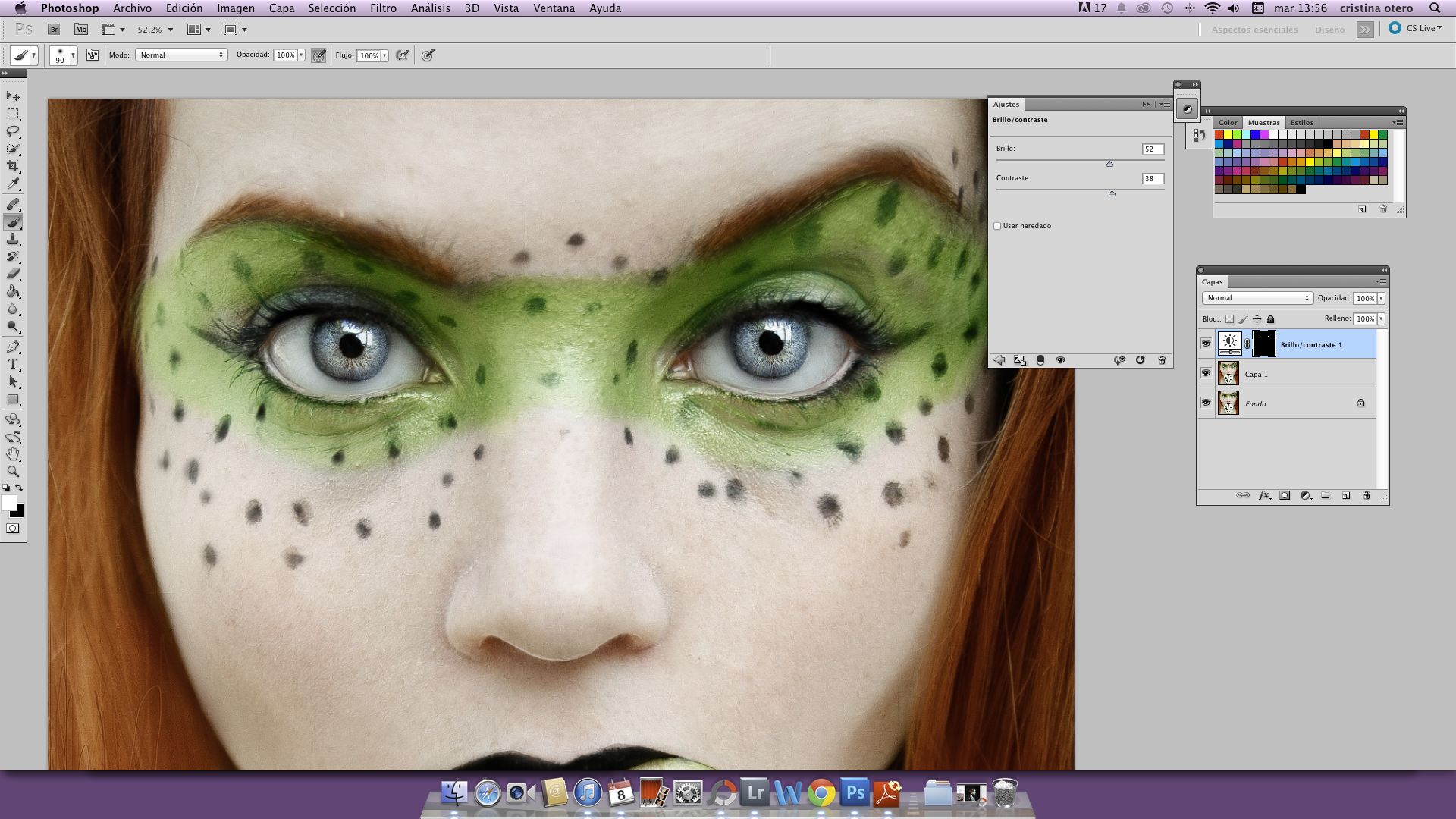
After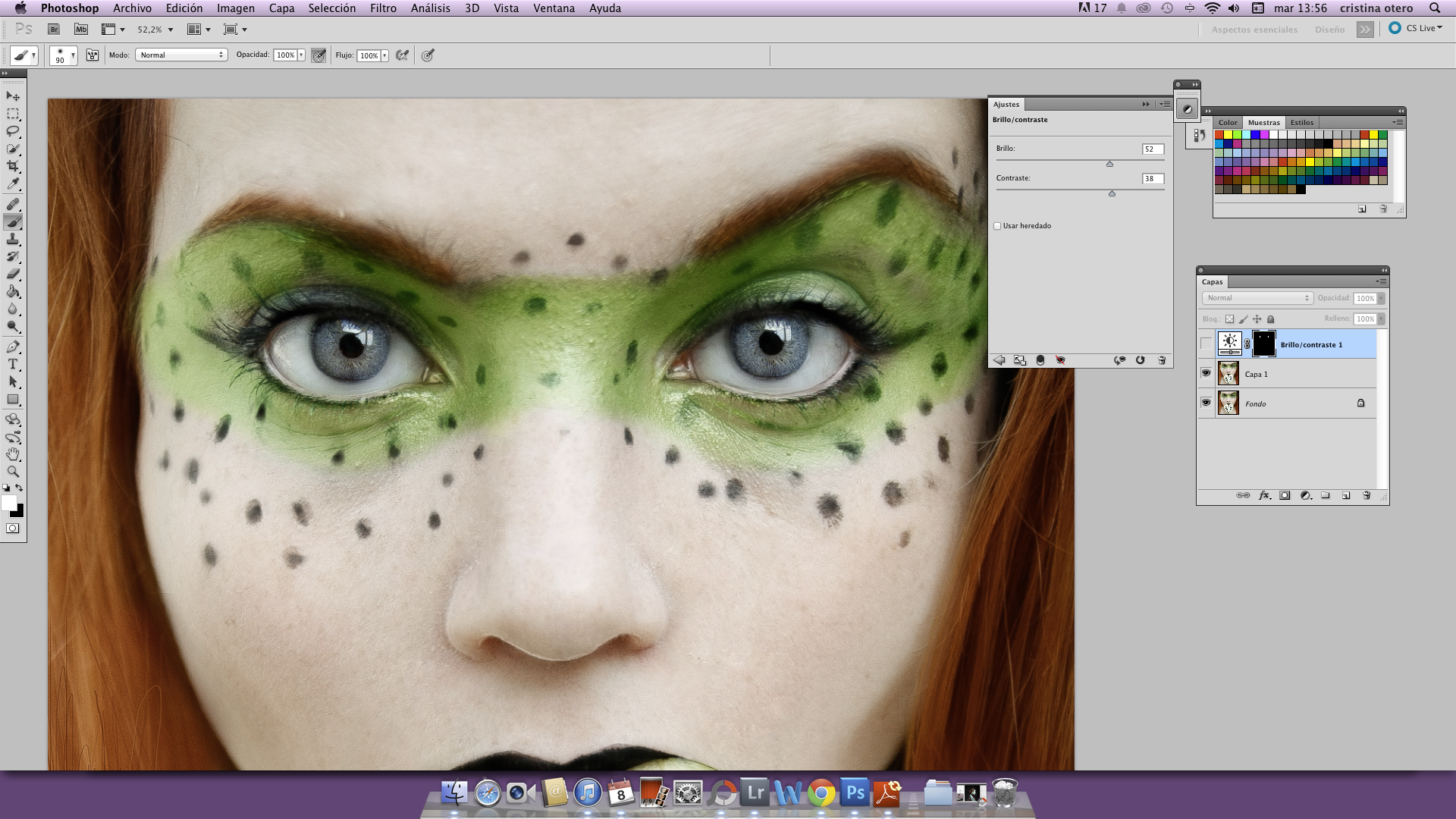
After this, I go to the most important part of my editing process. I use Dodge & Burn tools to give the image some more detail, and more overall impact. I use dodge tool to brighten brighter areas, and the burn tool is used to darken darker areas. With opacity very low, I use these tools throughout the whole picture.
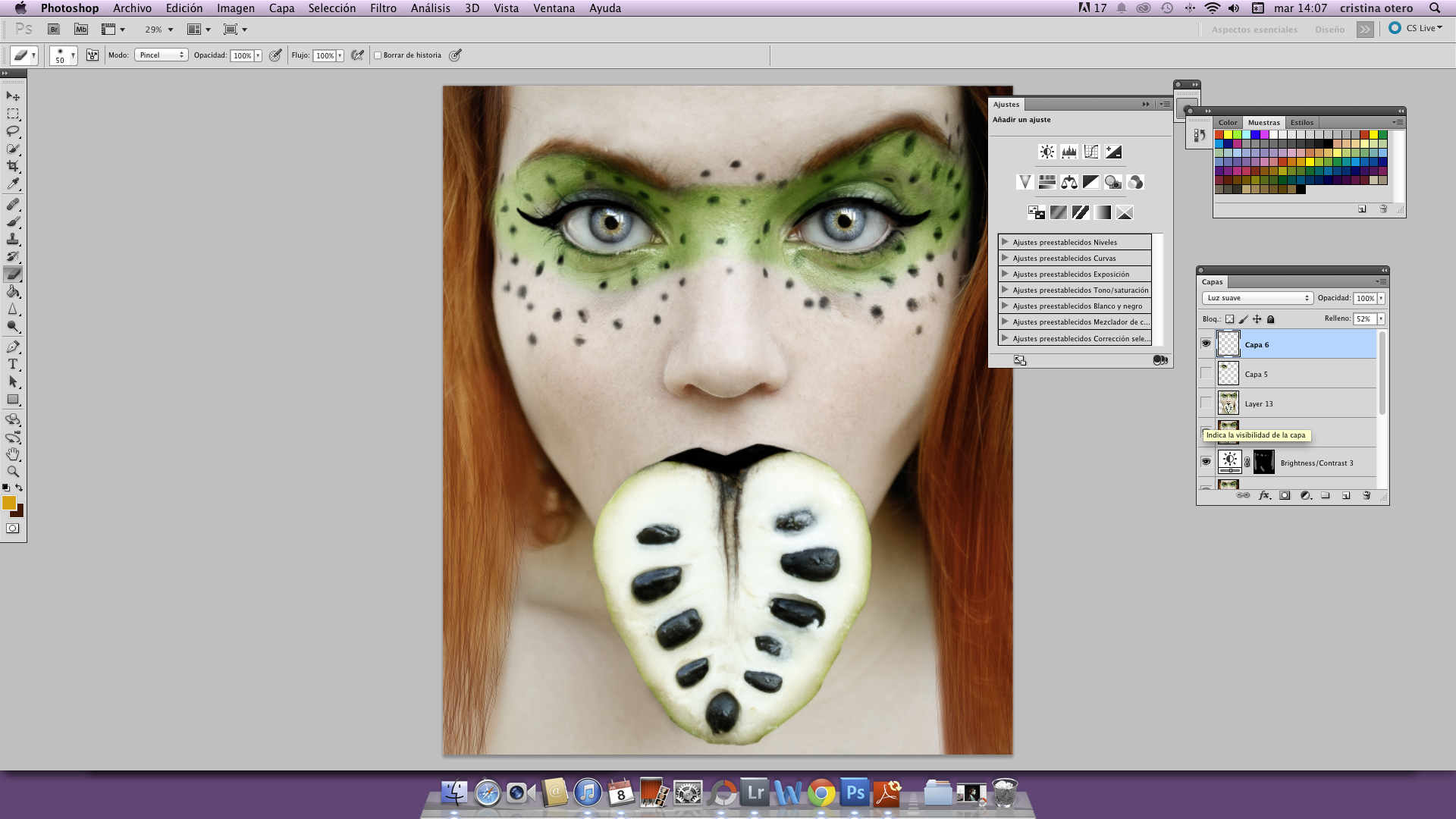
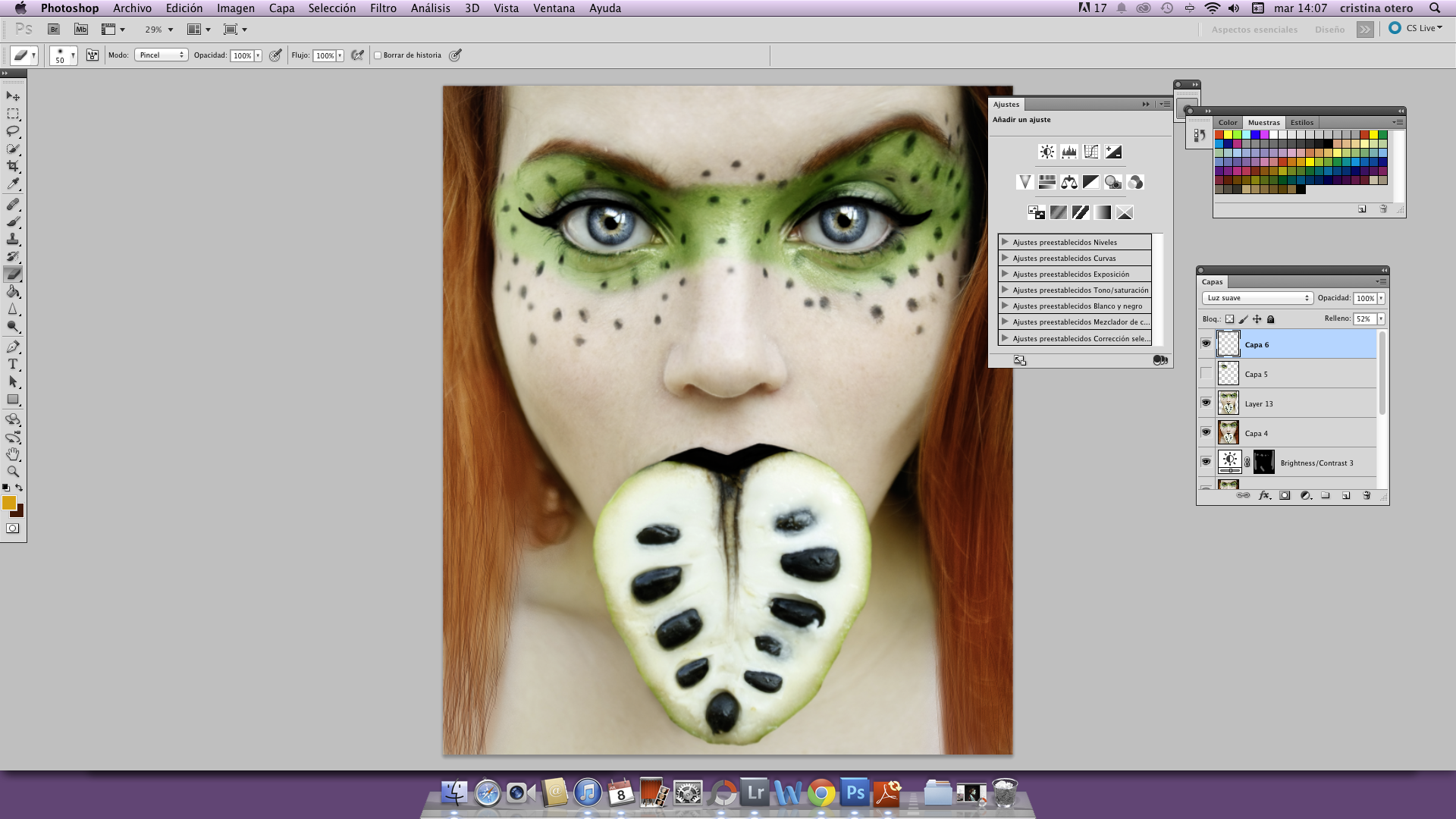
After this, I work on the colors. I make the green more vivid, the skin lighter, I paint some eyelashes, and then make the red brighter. All to enhance the fruit’s beauty!
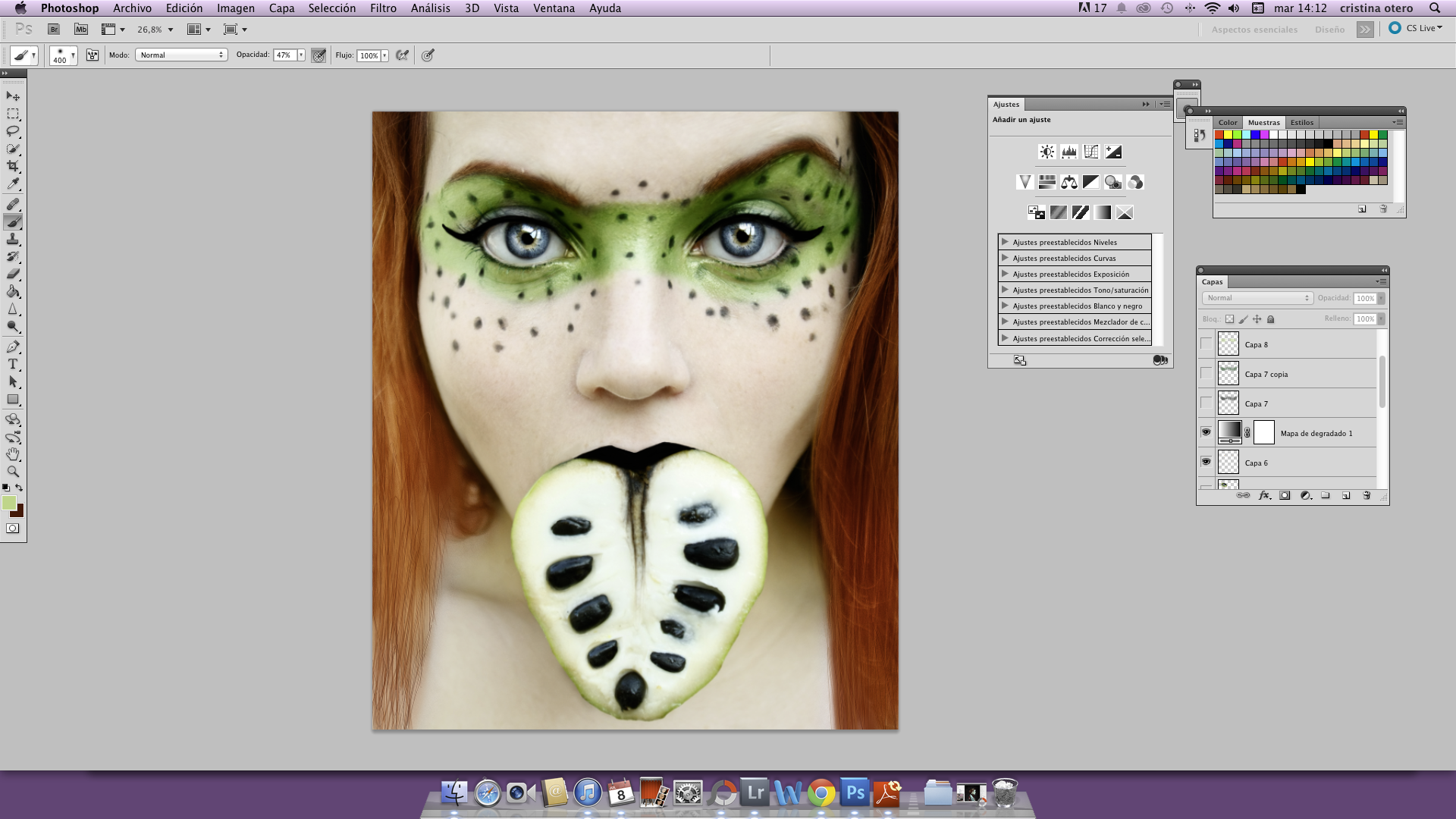
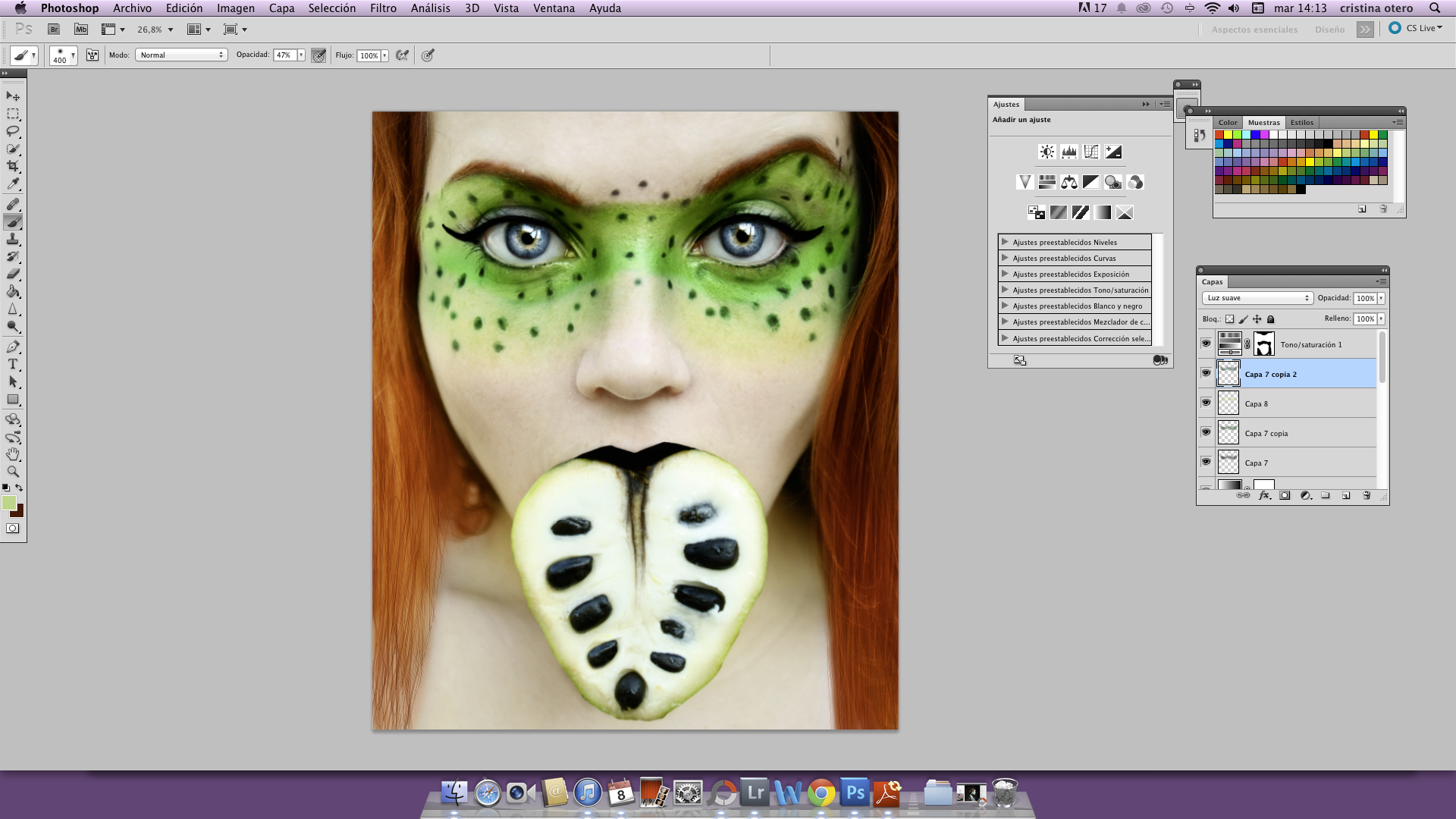
I crop the picture a bit, then add my signature. And voilá—we are done!
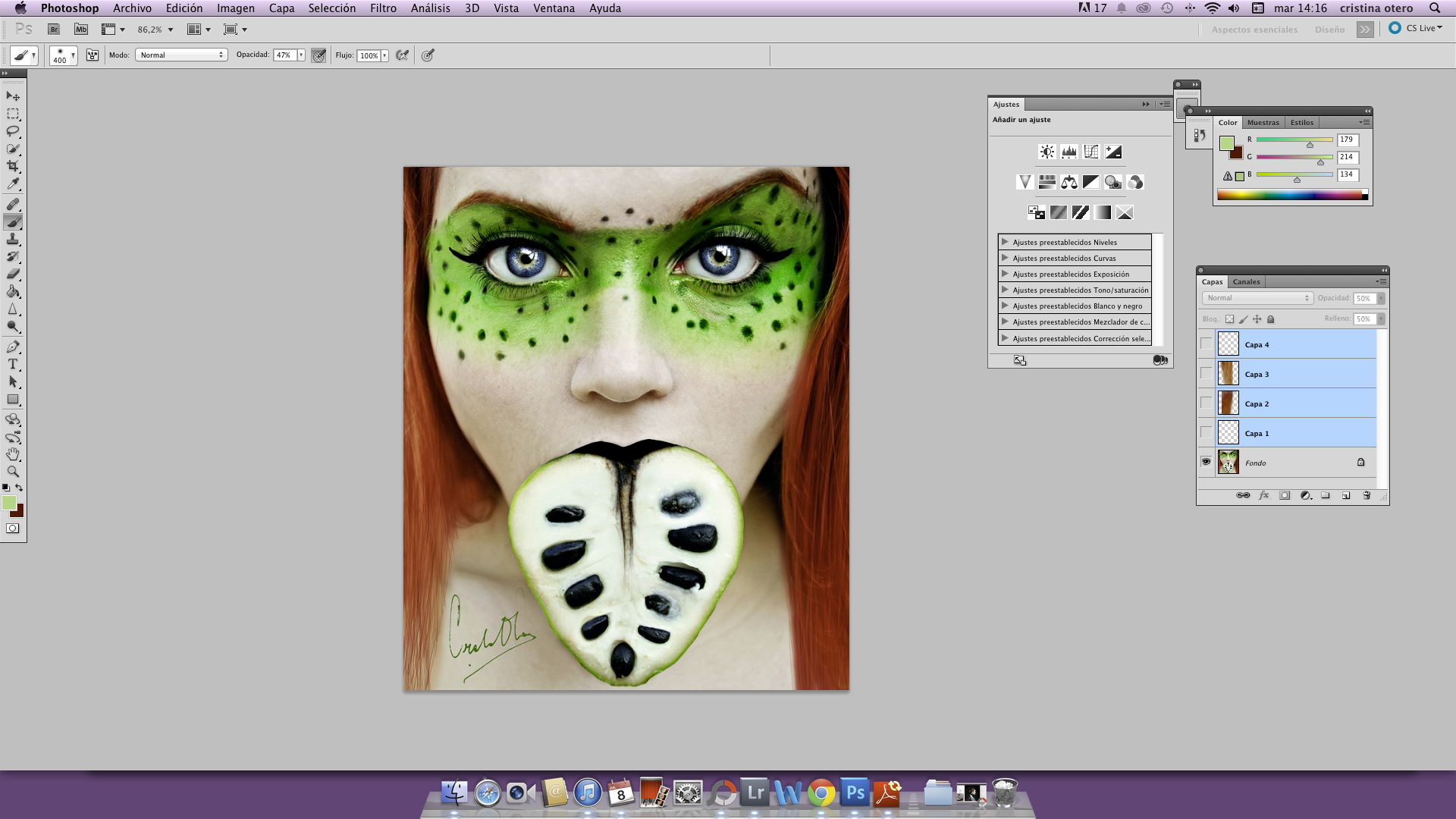
COMPARE: BEFORE AND AFTER EDITING
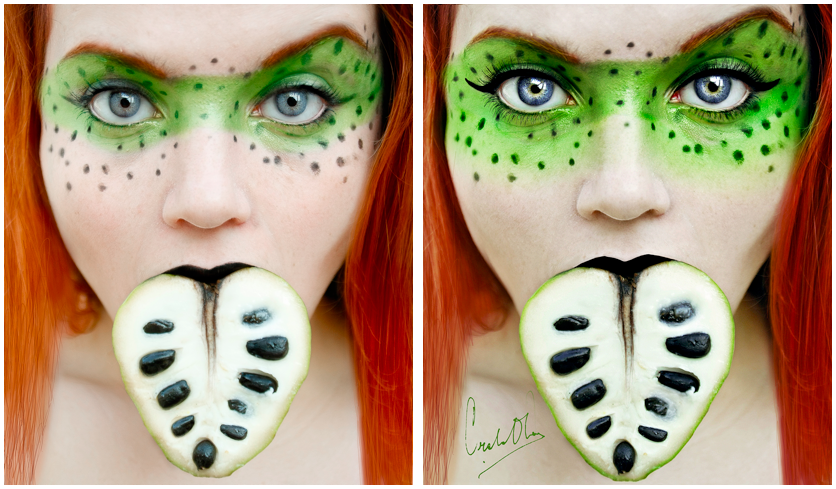
For more inspiration, below is a collection of the portraits, mostly self-portraits, that I have created:
To see more of my work, you can follow me on 500px or my Facebook page.
If you have any questions or comments for me, feel free to leave them in the box below.